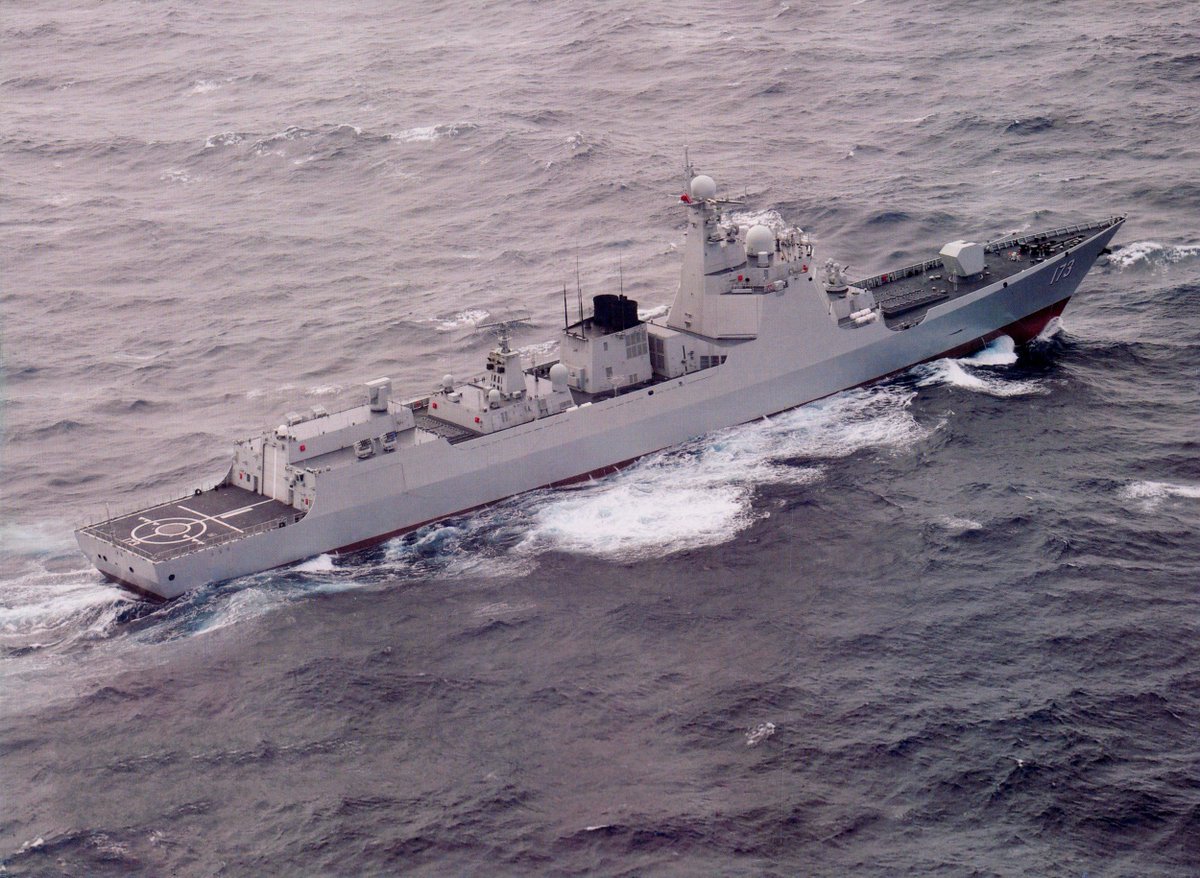YJ-18: 600 kg, 0.8 M, range 280 kmComparing it with Klub variant, there doesn't seem to be any visible outward difference.
club missile: 4000 kg, 3.0 M, range 120 km
The choice is yours.
YJ-18: 600 kg, 0.8 M, range 280 kmComparing it with Klub variant, there doesn't seem to be any visible outward difference.

Except that you did talk about closing the carrier gap, which is a direct comparison of USN carriers to Chinese carriers. Otherwise why even talk of a "gap"?
In summary, China's carrier build-up does not need to be hastened, is not directly competing with USN carriers, and is not as useful against the US military as other military assets.
Therefore your compressed carrier construction timeline seems to me unlikely to be what actually happens. IMO China is building carriers for mostly non-US reasons, at least for now, though the construction and operational experience gained from these fledgling carriers will obviously be invaluable in the future.
Or "four CBGs", if I like. A metric that is more easily quantified but has no real world meaning is still a less-than-useful metric.
Except that you referred specifically to closing the gap with respect to carriers, which as I said, is not a realistic expectation for the PLAN even in the medium term given what types of carriers it's likely to be fielding in this time.The "gap" I was referring to was the overall gap in relevant capabilities between PLAN and USN.
Yes, it is compressed. CV-16 was commissioned in 2012. CV-17 will likely be commissioned in 2018 or 2019. CV-18 will likely be commissioned some time during the mid 2020s, assuming it starts construction this year or next year. This represents a carrier commissioning every 5-7 years. Yet your schedule has the next several carriers being commissioned every 3-4 years, so how is this not compressed compared to what has been happening with China's carriers???As you point out, China has more going on than just the US, and relations between the two nations are certainly not at the point where preparations for war are overtaking broader and more long-term considerations. The possibility of conflict is something that PLAN must keep in mind and which results not only in sweeping decisions about which platforms to build and which not, but also many relatively minor adjustments. In the real world, slightly advancing or delaying an existing project is a common and reasonable response to a slight shift in economic or political circumstances. Nobody would claim, for example, that F-35 is an ideal aircraft to serve the US in a hypothetical conflict with China. Nonetheless, accelerating the rate of F-35 production is one of the more plausible and useful medium-term possibilities available to the US in strengthening its position with respect to China.
You describe my proposed schedule as "compressed". I disagree with that description, but nonetheless you are ignoring the single most significant indication of a compressed schedule aimed at maximising short-term capability: the existence of CV-17 and its likely induction date of 2019. If your theory is correct, then why does this vessel even exist? Why did China not follow its usual modus operandi and wait until it could deliver a qualitatively superior platform in CV-18 in the early 2020s (which certainly appears to be the timeline for that vessel)? With PLAN due to have three carriers online before 2025, it seems to me that it is you who are projecting a slowdown in carrier construction without evidence to support that assertion (which is not to say it will not happen).
I don't agree that "commissioning date" has the same general utility as "GDP" for economics, in terms of describing the warfighting capabilities of the PLAN vis a vis the USN, or any other navy for that matter.All metrics are simplifications of complex realities. Your "CBG" measure may more accurately capture the military utility of China's carrier forces, but it is more difficult to use for the reasons already discussed (difficult to assess accurately, variation in "warm up" time). One can criticise the limitation of using commissioning dates, just as one we can rail against the limitations of e.g. GDP growth as a measure of economic conditions. Or we can use the metrics that are available to us and which provide a consistent basis of comparison over time and between nations, whilst acknowledging their limitations. The only metric without simplification of a complex situation is called "reality". The reality of 2035 will not be open to direct inspection until 2035, and even then we will need to use intellectual constructs, i.e. simplifications, to describe it.
This is interesting. Could it be a potential backup measure just in case the Doklam Dispute gets out of hand (and the Indian Navy decides to interdict Chinese merchant vessels on the Indian Ocean)? Under such scenario, I would expect more than one PLAN vessel "disappearing" into the Indian Ocean.
just noticed
"Disparu" depuis 2 mois, 173 Changsha de Type 052D aurait été aperçu à Zhanjiang. La dernière fois qu'il a été vu est dans l'océan Indien.
Translated from French by
"Disappeared" for 2 months, 173 Type 052D Changsha would have been sighted in Zhanjiang. Last time he was seen was in the Indian ocean.
This is interesting. Could it be a potential backup measure just in case the Doklam Dispute gets out of hand (and the Indian Navy decides to interdict Chinese merchant vessels on the Indian Ocean)? Under such scenario, I would expect more than one PLAN vessel "disappearing" into the Indian Ocean.
But worth it, the exercise in a potential threat situation is priceless and should be gradually increase both in size and frequency , the threat from a country like India has not gone away for good.good exercise for the PLAN .... and cost a bit as well
